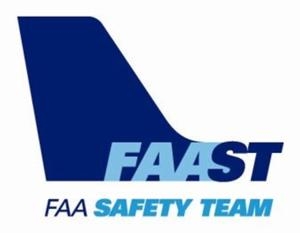The FAA started their Pilot Proficiency Award Program (commonly known as FAA WINGS) in 1996. It is run by the FAA Safety Team, or the FAASTeam. The intent of the program was, and is, to “improve the nation’s accident rate by conveying safety principles and practices through training, outreach, and education” (taken from faasafety.gov). The FAA WINGS program, free of charge, encourages pilots to pursue recurrent training to enhance their overall knowledge of all the aspects of aviation.
The FAA WINGS program has evolved over the years, but with the current structure, pilot’s accomplish tasks, both knowledge and flying, for credit that adds up to the equivalent of a flight review. Pilot’s must accrue three knowledge credits and three flight credits to complete a phase, and each phase acts as a flight review.
FAA WINGS has three levels, the basic, advanced, and master level. Under each level, you accomplish different phases. The basic level is “designed for pilot’s [desiring] a higher level of proficiency than … a normal flight review” (faasafety.gov). The flying tasks in the basic phase are based on the private or commercial pilot PTS, depending on the airman’s certificate level. The knowledge courses revolve around many different areas, all of which can be viewed on the FAASafety Team’s website. Most are free, but there are some courses that have a cost associated with them. In the advanced and master phases of the FAA WINGS program, the tasks have higher standards, challenging pilots to hold themselves to those higher standards.
One unique aspect of the FAA WINGS program is the opportunity to attend a safety seminar for credit. Throughout the year, there are many different safety seminars that take place in the different FSDO areas. The FAA WINGS seminars range from a study of accidents, to GPS usage and anything in between. You can even get FAA WINGS credit for attending the Bonanza BPPP or the Cirrus CPPP programs.
As an instructor, I highly recommend to all my customers to enroll in the FAA WINGS program and use it. This keeps pilot proficiency at a high level, which in turn keeps safety at a high level as well. Plus, you get to learn a lot too!
If you’d like to enroll in the FAA WINGS program, visit faasafety.gov to create an account. Then, find a good instructor and start working on those phases!

